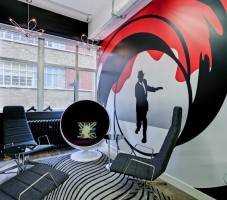 What has become increasingly apparent over recent years is that the office isn’t just a place to work, but also a driver of competitive advantage. We’ve always known this to a greater or lesser extent, but the dynamic and ever shifting nature of the modern world is presenting organisations with new and evolving challenges that they must address with all of the tools at their disposal. At the heart of this complexity is the physical workspace. Its design touches on every aspect of the changing workplace and the objectives organisations set for themselves and their employees. Although it has lots its primacy as the main place of work, you could also argue that the focus on the office’s key strengths makes it more important than ever within the context of overall working cultures. So, with that in mind, here are ten of the most important current trends in workplace design and management we foresee for 2016.
What has become increasingly apparent over recent years is that the office isn’t just a place to work, but also a driver of competitive advantage. We’ve always known this to a greater or lesser extent, but the dynamic and ever shifting nature of the modern world is presenting organisations with new and evolving challenges that they must address with all of the tools at their disposal. At the heart of this complexity is the physical workspace. Its design touches on every aspect of the changing workplace and the objectives organisations set for themselves and their employees. Although it has lots its primacy as the main place of work, you could also argue that the focus on the office’s key strengths makes it more important than ever within the context of overall working cultures. So, with that in mind, here are ten of the most important current trends in workplace design and management we foresee for 2016.
Organic, biophilic and biomimetic design
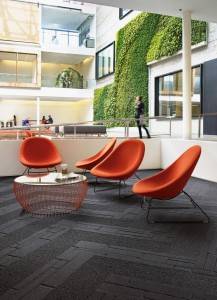 At its most fundamental level, this is about the relationship between people and nature. We know at an instinctive level the advantages natural light and air have on our wellbeing. Any office interior that offers such necessities will yield instant results.
At its most fundamental level, this is about the relationship between people and nature. We know at an instinctive level the advantages natural light and air have on our wellbeing. Any office interior that offers such necessities will yield instant results.
We are also finding out much more about the way imagery and natural elements have on us. An ongoing research project into this issue has been established by flooring manufacturer Interface and researchers including Oliver heath and organisational psychologist Cary Cooper. The Human Spaces report into The Global Impact of Biophilic Design in the Workplace claims that employees who work in environments with natural elements report a 15 percent higher level of well being, are 6 percent more productive and 15 percent more creative overall. This is one reason why a growing number of workplaces not only use more natural imagery in their design but also feature intelligent planting and even plant walls whose beneficial effects are both physiological and psychological.
A related trend is also evident in the growing interest in the field of biomimetics which describes the design of things that mimic the functions of natural forms. Nature is rarely wasteful and invariably creates forms perfectly aligned to functions. It was the architect Frank Lloyd Wright who once said: “harmony between human habitation and the natural world through design approaches so sympathetic and well integrated with its site that buildings, furnishings, and surroundings become part of a unified, interrelated composition.” The promise of biomimetic design is that it will not only create products such as Ross Lovegrove’s unmistakeably organic design of the Go Chair, but also find ways of expressing the interrelationships between people in offices in organic office layouts.
Agile working, coworking and the gig economy
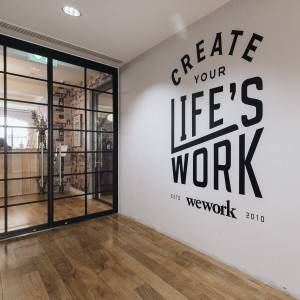 Although the idea remains current, some of the principles of flexible working are not always applicable to several important, emerging forms of work. Largely this is because flexible working describes an alternative to the traditional hours and place of work for people who are still contracted to a single employer and expected to produce the same outcomes regardless of where and when they meet them.
Although the idea remains current, some of the principles of flexible working are not always applicable to several important, emerging forms of work. Largely this is because flexible working describes an alternative to the traditional hours and place of work for people who are still contracted to a single employer and expected to produce the same outcomes regardless of where and when they meet them.
However, the most important change in the UK workforce since the 2008 recession hasn’t been in the relationship between employer and employee. It has been the growth in the number of self-employed. Between 2008 and 2014 (the last date for which figures are available), the number of self-employed workers rose by almost 700,000 from 3.8 million to 4.5 million. No doubt the next batch of statistics will track a similar trajectory.
These people at the heart of the gig economy are very different to employees. Many have portfolio careers, are happy to vary the hours they work depending on what they are up to in their lives and see the whole world as their office. Many work in creative industries. It is not in their interests to commit long term investments in assets like offices, but they do want to surround themselves with like minded individuals and enjoy the structures of the workplace. So these are the people who are driving the boom in coworking spaces, where they can consume rather than occupy and office for a set period of time.
The design of coworking spaces is worth considering because it has as much in common with a club, a hotel or cafe as it has with a traditional office. Maybe more so. The influences of this kind of approach in mainstream office design predate the coworking phenomenon but we can expect them to gather pace during 2016.
Wellness and wellbeing
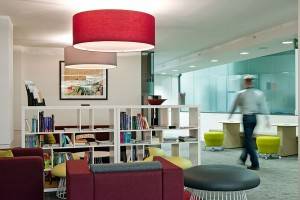 In the not so distant past, wellbeing at work was primarily seen as a health and safety issue. Offices and office furniture were designed to minimise the risk of harm to their occupants. There is a residual element of this in some workplace legislation, especially the Display Screen Equipment regulations which date back to 1992 but are still in use and focus on preventing the harm that can be caused by poor posture when using a desktop computer.
In the not so distant past, wellbeing at work was primarily seen as a health and safety issue. Offices and office furniture were designed to minimise the risk of harm to their occupants. There is a residual element of this in some workplace legislation, especially the Display Screen Equipment regulations which date back to 1992 but are still in use and focus on preventing the harm that can be caused by poor posture when using a desktop computer.
All of this seems a bit 20th Century now, and for good reason. Organisations have moved beyond the idea that they should harm staff as little as possible and instead embraced the idea that they should help them to improve their physical and psychological wellbeing. It’s a fundamental shift from a negative to a positive mindset and it has had a profound effect on the way we design offices.
Ergonomic furniture still has a role to play in this. Indeed it is the main reason why more and more organisations in the UK are specifying height adjustable desks as well as chairs. But it is also why so many office designs are focussed on improving the wellbeing of people in holistic ways. This can range from the direct such as the provision of daylight and fresh air to the subtle, such as signs of a working culture that encourages movement, interaction and taking proper breaks.
This issue has become so intertwined with the issue of workplace design that its now taken into account when designing green buildings. According to the World Green Building Council in a 2014 study entitled Health, Wellbeing and Productivity in Offices: The Next Chapter for Green Building there is now “overwhelming evidence” for the ways in which office design significantly impacts the health, happiness, wellbeing and productivity of people.
Inclusive design
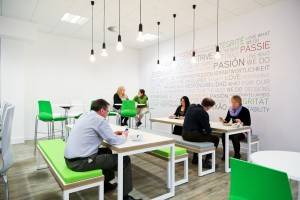 The subject of inclusive design is another topic that has extended its scope. It was once indistinguishable from the issue of accessibility so tended to focus on design features that would make the building compatible with the needs of disabled employees and visitors. This remains an ongoing challenge, especially as employers become more aware of how they can design great workspaces. But it has also evolved to refer to design that is flexible enough to meet the needs of a wide range of occupants and users regardless of their physical abilities.
The subject of inclusive design is another topic that has extended its scope. It was once indistinguishable from the issue of accessibility so tended to focus on design features that would make the building compatible with the needs of disabled employees and visitors. This remains an ongoing challenge, especially as employers become more aware of how they can design great workspaces. But it has also evolved to refer to design that is flexible enough to meet the needs of a wide range of occupants and users regardless of their physical abilities.
One of the most interesting aspects of this is how it meets the needs of different generations of people. While all the talk remains about Gen Y and Gen Z, the fact is that the average age of a UK worker is increasing and for the first time in history, many organisations now have four generations of people in the office.
There is a tendency to focus on attitudes to technology and the contrast between digital natives and older workers. This is almost certainly exaggerated and ignore the diversity of working styles and attitudes that exist within demographic groupings. But there are other factors at play too, not least designing workplaces and cultures that meet the needs of people at different stages of their life. For example, a 2015 report from the Scottish Commission on Older Women claims that a generation of older female workers are struggling to balance their need to carry on working with their obligations to family members, especially when they work as carers for their parents or partners. Agile and flexible working models are key for this group of people to ensure they can strike the right balance.
This pattern is replicated across the UK for both older male and female workers and is one of the key drivers of the uptake of flexible working. The CIPD has warned that the UK was sleepwalking into a skills crisis because it was ignoring the untapped pool of talent older workers represent, especially women. The challenge for employers is to consider how to offer the flexible working and support such workers often need.
Convergent design
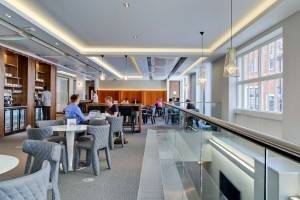 Whenever office workers are asked to describe their perfect office, the description they come up with is never of a coldly monotonous corporate open plan space with grey-blue carpets, grey desks and grey chairs. Instead what they describe is far more likely to sound like a cafe or hotel lobby, right down to the fact they’ll ask for armchairs, pleasant surroundings, plenty of meeting space and good, fresh coffee. They know they have to work at desks and chairs for certain tasks, often for long periods, but their focus on what makes a truly great office is usually elsewhere.
Whenever office workers are asked to describe their perfect office, the description they come up with is never of a coldly monotonous corporate open plan space with grey-blue carpets, grey desks and grey chairs. Instead what they describe is far more likely to sound like a cafe or hotel lobby, right down to the fact they’ll ask for armchairs, pleasant surroundings, plenty of meeting space and good, fresh coffee. They know they have to work at desks and chairs for certain tasks, often for long periods, but their focus on what makes a truly great office is usually elsewhere.
This is a direct consequence of the fact that we are now used to working in those sorts of environments. So just as work has escaped the walls of the traditional office to colonise the outside world, and just as hotels, cafes and other public spaces have taken on the roles of surrogate workplaces, so there has been a backwash of form and function in return. There are very good reasons why it’s increasingly difficult to distinguish between parts of a modern office design and a cafe.
Beyond ticking the green building box
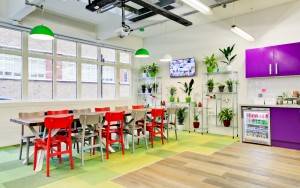 Standards and accreditations are invaluable tools when it comes to meeting the specific objectives of a building’s design and management. This is particularly true for environmental standards which, by their very nature, are complex and evidence based. The major problem with them is that once suppliers know they can’t expect to win jobs without them, then you pretty soon reduce their value to a box ticking exercise. When every office furniture maker knows they won’t win a job unless they manufacture desks using wood from sustainable forests, then there is no added value to the standard. What was intended to be green very quickly becomes beige.
Standards and accreditations are invaluable tools when it comes to meeting the specific objectives of a building’s design and management. This is particularly true for environmental standards which, by their very nature, are complex and evidence based. The major problem with them is that once suppliers know they can’t expect to win jobs without them, then you pretty soon reduce their value to a box ticking exercise. When every office furniture maker knows they won’t win a job unless they manufacture desks using wood from sustainable forests, then there is no added value to the standard. What was intended to be green very quickly becomes beige.
There have been signs in recent years that buyers and sellers are looking beyond green design as a simple check on a range of accreditations. A 2015 survey from Acclaro Advisory, a facilities management consultancy, found that more and more organisations now consider a wide range of factors when assessing environmental performance including looking at the supply chain, wellbeing and environmental strategies of suppliers, working with them to set their own targets and developing unique sets of assessment based on their own needs.
There are sound reasons why both buyers and vendors will welcome this shift. For buyers, there is the chance to tailor their relationships and purchasing to meet their own needs. For suppliers there is the chance to flex their own credentials and escape the general tedium and inconsequentiality of the green box ticking.
Zonal design
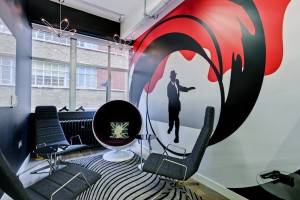 This is an idea that has been around for over a quarter of a century, has been widely practiced over that period and yet is only now really coming its own. It is an answer to the perennial question of how you create a workplace that meets the needs of groups of people who work at different times and in different ways depending on their job function, age, personality, working relationships, mood, tasks and whatever.
This is an idea that has been around for over a quarter of a century, has been widely practiced over that period and yet is only now really coming its own. It is an answer to the perennial question of how you create a workplace that meets the needs of groups of people who work at different times and in different ways depending on their job function, age, personality, working relationships, mood, tasks and whatever.
By creating different types of space within an office and empowering people to make decisions about how to use them, organisations are able to manage some of the most commonly made complaints employees have about their working environment. This is uniquely tied up with how humans use and enjoy spaces both inside an office building and outside it.
In 1970, a researcher called William H White decided to carry out a project looking at the impact of urban spaces on people from an anthropological standpoint. The Street Life Project examined the relationship between people and their immediate environment in parts of New York and found that the most interesting aspects of human interactions take place in ritualised and predictable forms and that the best spaces foster those interactions. It also identified the characteristics of the best spaces including the proportion of sitting space to circulation space and the way we like different levels of light in a space. Crucially it also reports that if you want a space to be used, it should be stimulating and enticing. These are insights that reflect the way public spaces are (or should be) in offices and they are perfectly encapsulated within the principles of an intelligently designed workplace.
__________________________
 Dan Callegari is London Design Director at Area Sq
Dan Callegari is London Design Director at Area Sq














December 15, 2015
Seven essential workplace design trends to keep an eye on during 2016 0
by Dan Callegari • Comment, Facilities management, Workplace design
Organic, biophilic and biomimetic design
We are also finding out much more about the way imagery and natural elements have on us. An ongoing research project into this issue has been established by flooring manufacturer Interface and researchers including Oliver heath and organisational psychologist Cary Cooper. The Human Spaces report into The Global Impact of Biophilic Design in the Workplace claims that employees who work in environments with natural elements report a 15 percent higher level of well being, are 6 percent more productive and 15 percent more creative overall. This is one reason why a growing number of workplaces not only use more natural imagery in their design but also feature intelligent planting and even plant walls whose beneficial effects are both physiological and psychological.
A related trend is also evident in the growing interest in the field of biomimetics which describes the design of things that mimic the functions of natural forms. Nature is rarely wasteful and invariably creates forms perfectly aligned to functions. It was the architect Frank Lloyd Wright who once said: “harmony between human habitation and the natural world through design approaches so sympathetic and well integrated with its site that buildings, furnishings, and surroundings become part of a unified, interrelated composition.” The promise of biomimetic design is that it will not only create products such as Ross Lovegrove’s unmistakeably organic design of the Go Chair, but also find ways of expressing the interrelationships between people in offices in organic office layouts.
Agile working, coworking and the gig economy
However, the most important change in the UK workforce since the 2008 recession hasn’t been in the relationship between employer and employee. It has been the growth in the number of self-employed. Between 2008 and 2014 (the last date for which figures are available), the number of self-employed workers rose by almost 700,000 from 3.8 million to 4.5 million. No doubt the next batch of statistics will track a similar trajectory.
These people at the heart of the gig economy are very different to employees. Many have portfolio careers, are happy to vary the hours they work depending on what they are up to in their lives and see the whole world as their office. Many work in creative industries. It is not in their interests to commit long term investments in assets like offices, but they do want to surround themselves with like minded individuals and enjoy the structures of the workplace. So these are the people who are driving the boom in coworking spaces, where they can consume rather than occupy and office for a set period of time.
The design of coworking spaces is worth considering because it has as much in common with a club, a hotel or cafe as it has with a traditional office. Maybe more so. The influences of this kind of approach in mainstream office design predate the coworking phenomenon but we can expect them to gather pace during 2016.
Wellness and wellbeing
All of this seems a bit 20th Century now, and for good reason. Organisations have moved beyond the idea that they should harm staff as little as possible and instead embraced the idea that they should help them to improve their physical and psychological wellbeing. It’s a fundamental shift from a negative to a positive mindset and it has had a profound effect on the way we design offices.
Ergonomic furniture still has a role to play in this. Indeed it is the main reason why more and more organisations in the UK are specifying height adjustable desks as well as chairs. But it is also why so many office designs are focussed on improving the wellbeing of people in holistic ways. This can range from the direct such as the provision of daylight and fresh air to the subtle, such as signs of a working culture that encourages movement, interaction and taking proper breaks.
This issue has become so intertwined with the issue of workplace design that its now taken into account when designing green buildings. According to the World Green Building Council in a 2014 study entitled Health, Wellbeing and Productivity in Offices: The Next Chapter for Green Building there is now “overwhelming evidence” for the ways in which office design significantly impacts the health, happiness, wellbeing and productivity of people.
Inclusive design
One of the most interesting aspects of this is how it meets the needs of different generations of people. While all the talk remains about Gen Y and Gen Z, the fact is that the average age of a UK worker is increasing and for the first time in history, many organisations now have four generations of people in the office.
There is a tendency to focus on attitudes to technology and the contrast between digital natives and older workers. This is almost certainly exaggerated and ignore the diversity of working styles and attitudes that exist within demographic groupings. But there are other factors at play too, not least designing workplaces and cultures that meet the needs of people at different stages of their life. For example, a 2015 report from the Scottish Commission on Older Women claims that a generation of older female workers are struggling to balance their need to carry on working with their obligations to family members, especially when they work as carers for their parents or partners. Agile and flexible working models are key for this group of people to ensure they can strike the right balance.
This pattern is replicated across the UK for both older male and female workers and is one of the key drivers of the uptake of flexible working. The CIPD has warned that the UK was sleepwalking into a skills crisis because it was ignoring the untapped pool of talent older workers represent, especially women. The challenge for employers is to consider how to offer the flexible working and support such workers often need.
Convergent design
This is a direct consequence of the fact that we are now used to working in those sorts of environments. So just as work has escaped the walls of the traditional office to colonise the outside world, and just as hotels, cafes and other public spaces have taken on the roles of surrogate workplaces, so there has been a backwash of form and function in return. There are very good reasons why it’s increasingly difficult to distinguish between parts of a modern office design and a cafe.
Beyond ticking the green building box
There have been signs in recent years that buyers and sellers are looking beyond green design as a simple check on a range of accreditations. A 2015 survey from Acclaro Advisory, a facilities management consultancy, found that more and more organisations now consider a wide range of factors when assessing environmental performance including looking at the supply chain, wellbeing and environmental strategies of suppliers, working with them to set their own targets and developing unique sets of assessment based on their own needs.
There are sound reasons why both buyers and vendors will welcome this shift. For buyers, there is the chance to tailor their relationships and purchasing to meet their own needs. For suppliers there is the chance to flex their own credentials and escape the general tedium and inconsequentiality of the green box ticking.
Zonal design
By creating different types of space within an office and empowering people to make decisions about how to use them, organisations are able to manage some of the most commonly made complaints employees have about their working environment. This is uniquely tied up with how humans use and enjoy spaces both inside an office building and outside it.
In 1970, a researcher called William H White decided to carry out a project looking at the impact of urban spaces on people from an anthropological standpoint. The Street Life Project examined the relationship between people and their immediate environment in parts of New York and found that the most interesting aspects of human interactions take place in ritualised and predictable forms and that the best spaces foster those interactions. It also identified the characteristics of the best spaces including the proportion of sitting space to circulation space and the way we like different levels of light in a space. Crucially it also reports that if you want a space to be used, it should be stimulating and enticing. These are insights that reflect the way public spaces are (or should be) in offices and they are perfectly encapsulated within the principles of an intelligently designed workplace.
__________________________